Fortescue Lane - Dublin
Fortescue Lane,
Off Lr. Mount Pleasant Ave,
Rathmines, Dublin 6, Ireland.
https://www.google.fr/maps/place/Fortescue+Ln,+Dublin,+Irlande/@53.3287399,-6.3975309,11.06z/data=!4m13!1m7!3m6!1s0x48670ea74960f8b1:0x791717f1567716fa!2sFortescue+Ln,+Dublin,+Irlande!3b1!8m2!3d53.3286575!4d-6.2634431!3m4!1s0x48670ea74960f8b1:0x791717f1567716fa!8m2!3d53.3286575!4d-6.2634431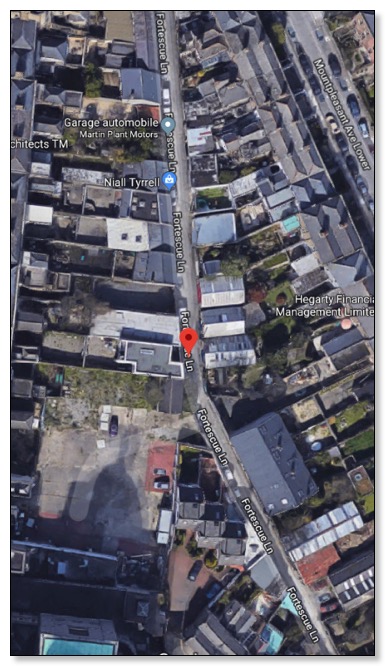
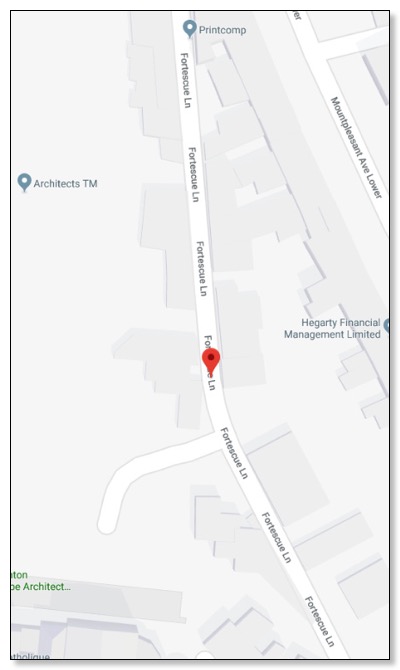
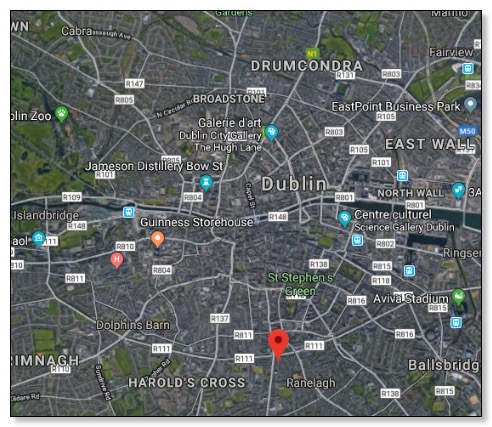
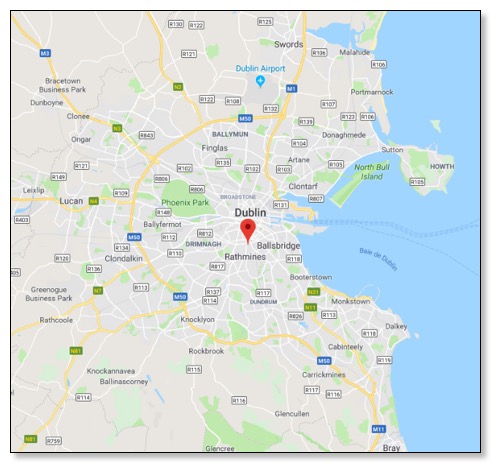

Galgorm Castle
Galgorm Castle Golf Club
(old site 199…)
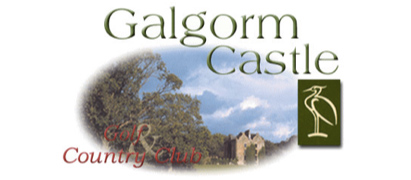
Galgorm Castle Golf Club is an exciting mixture of the new and the old.
This 18 hole, 6736 yards par 72 Championship course is set in 220 acres of beautiful,
mature parkland located in the heart of County Antrim.
It is overlooked by Galgorm Castle, which was built in 1618 by Sir Faithful Fortescue.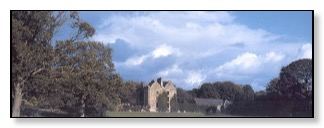
From the outset it has received wonderful reviews from both golf writers and players,
rapidly building up a reputation as one of the finest inland courses in Ireland. (Ranked top golfing complex by The Newsletter - 1999)
The course has been built in the estate grounds of Galgorm Castle,
a site of great historical interest and one of the finest examples of Jacobean architecture in Ireland.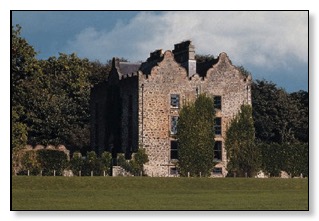
No expense has been spared in producing a course to meet the most exacting standards of design and construction.
All greens and tees are built to USGA specification.
Full use has been made of the natural features available,
which include five lakes and two rivers, the Maine and the Braid, one of which provides a magnificent oxbow.
With the backdrops of the Castle and the ancient Irish fort of the MacQuillan clan,
there is no more inspiring setting for your golfing requirements.
The course is within half an hours drive of Belfast, the International Airport and the ferry port at Larne.
Equally close at hand are attractions such as the Giants Causeway and the world famous Glens of Antrim
making Galgorm Castle the ideal base from which to explore the delights of Northern Ireland.
Come and experience the pleasures of a round of golf at Galgorm Castle
- a warm Irish welcome awaits you on what we are sure will be a memorable visit.![]()
Castle History
Actual site : http://www.galgormcastle.com/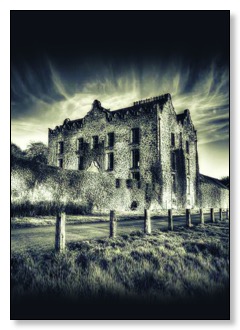
Galgorm Castle is one of the finest examples of Jacobean architecture in Ireland. In May 1607, King James I granted the Ballymena Estate to Rory Og MacQuillan, a mighty warrior, famous for stating “No Captain of this race ever died in his bed,” (which thankfully means Galgorm Castle has one less ghost.). His Castle overlooks and dominates the tenth green and a network of souterrains at the fifth and eighth greens.
Sir Faithful Fortescue (b 1585) was the nephew Arthur Chichester. This name may have come from his habit of being particularly sharp in his dealings as he tricked Rory Og McQuillan out of estates and started to build Galgorm Castle in 1618. He might better have been known as Sir Faithful Fortescue as during the Civil War, in the heat of the battle of Edghhill, he changed sides from the Parliamentarians to the Cavaliers, but forgot to instruct his men to remove the orange sashes of the Parliamentarians so seventeen of them were slain by the Cavaliers as the enemy.
Always known for turning a quick buck Sir Faithless sold the estate to the infamous Dr Alexander Colville who, as legend has it was an alchemist, reputed to have sold his soul to the devil for gold and knowledge. The stories of the good doctor are well documented and his portrait is not allowed to ever leave the castle or disaster will fall. His footsteps beat out a steady tattoo through the night as he does his rounds. Other nights, a ghostly light flickers around the park as he searches for his treasure, lost for over 300 years.
The Youngs – rich linen merchants, bought the Estate in 1850 and their cousin Sir Roger Casement lived here for six years while he was at Ballymena Academy.
The Duke of Wurtenburg made his headquarters at Galgorm following the Battle of the Boyne. The renowned Irish scholar Rose Young was born at Galgorm in 1865.
During the 1980’s, Christopher Brooke and his family inherited Galgorm Castle Estate and began developing his vision to turn Galgorm Castle into the one of Northern Ireland’s premier destinations, securing the Estate’s long-term future.
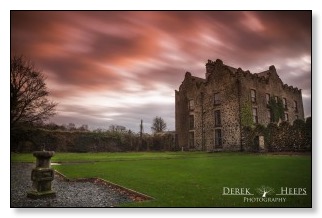
![]()
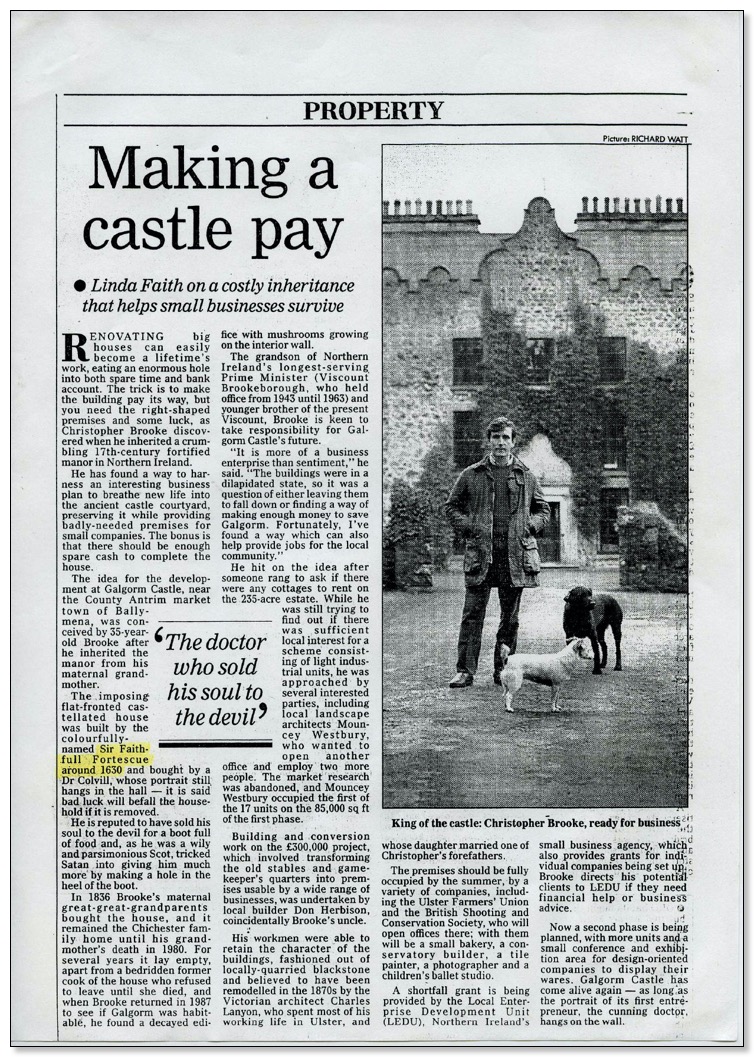

Fortescue Stephenstown Estate
Background to the Fortescue Estate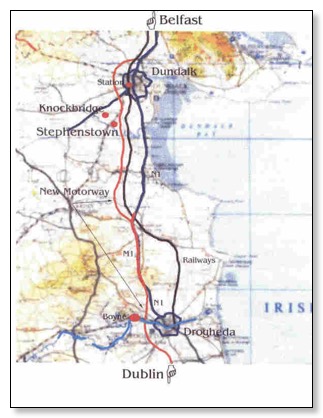
Introduction:
From a small farm of 600 acres at the beginning of the 18th century the Fortesque Estate expanded until they owned 23,000 acres at the start of the 20th century. The estate was taken over by the Land Commission and devided between tenants in 3 parishes. When Mrs. fortescue died in 1966 there was only 200 acres left in the estate. The place was left to wreck and ruin and the picture of the house as it is today tells its own story.
The golden era of the estate was between 1600 and 1850. The fortescues brought over from Scotland an architect called William Galt who was married to Agnes Burns (sister of Robbie Burns). William Galt was to manage the estate and build two ponds to feed the "big house". This he duly did and one of them is what is now called Stephenstown Pond. They planted under his direction 53,000 trees in two years on the Stephenstown Estate.
The Estate is situated 2km from the Southern roundabout on the Western By Pass near Dundalk.
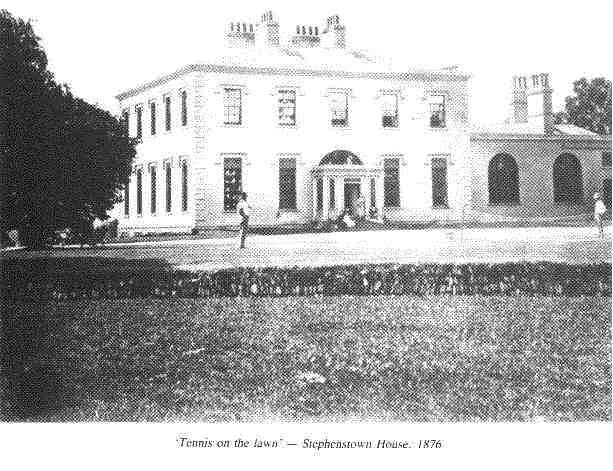
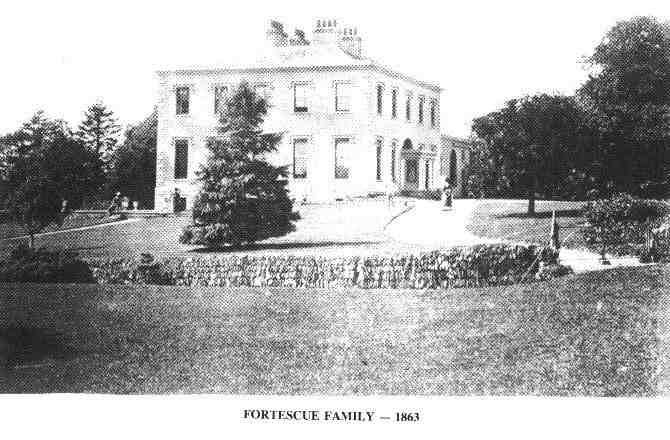
![]()
A Detailed Account of the Fortescues of Stephenstown
Page 1 of 8
Since the publication of the `History of Knockbridge' in 1994 clearer information pertaining to the fortescues of Stephenstown has come to light. On March 19 1735, Mr. Richard Taaffe of Manfieldstown granted a lease of the lands of Stephenstown, Ballyclare and Ballinlough (a later deed confirms that the townland of Knocktavey was also included, together with the dwelling house and demesne of Stephenstown) to Mr. John Taaffe. On 14th February 1740, John Taaffe surrendered the lease of all the above lands to Mr. Page, a money lender from Dublin, who immediately re-leased on the same terms and conditions to Chichester fortescue, the second son of William fortescue and Margaret Gernon. Chichester, who lived at Dellin in the parish of Darver, never married and when he died in 1747 he left all his property to his younger brother, Mathew, who continued with the lease on the above named land.
When the lease expired on the 25th July 1777, Mathew purchased the above named property (the Stephenstown Estate) in fee simple for £12,150. This Mathew, born c. 1698, who is refered to as an officer in the Royal Navy in some documents and a soldier in others, appears to have acquired considerable wealth during his lifetime. He had two children, Mathew and Catherine, to a union with Catherine Connellan. It is doubtful if he ever lived in Stephenstown as in all documents he is refered to as Mathew of Dellin. His daughter Catherine, who was born c. 1759, married in 1779 Revd. John ( Jack) fortescue, her first cousin first removed, and had one son Mathew, born in 1780 and who was afterwards refered to as `Matt of Dundalk'. He never married and died in 1850.
Catherine seemingly died some short time after the birth of her only son as she predeceased her father who died in 1784. In his will, made 23rd December 1783 and witnessed by John Page, John Page Jr., and Samuel Page Jr., the first Mathew left all his property to his son Mathew.
Mathew married Marianne, the twenty year old daughter of John McClintock of Drumcar in 1787 and it is probable that they were the first of the family to live in Stephenstown. A lot of information about Stephenstown at that time is available because Marianne kept a diary and also from the fact that John McClintock insisted that fortescue gave proof of all property he owned before he allowed his daughter to marry. From this diary, started in 1797, we learn a lot about country life at the time, family life, religious practices, journeys to England, family sicknesses and the politics of the time.
Mathew fortescue was a heavy drinker and would sniff his nose at the thought of drinking tea which was somewhat a novelty at the time. He suffered from gout, a fashionable complaint at the time.
It would appear that Mathew fortescue was one of the nine gentlemen out of every ten in Ireland who were, according to Lord Chesterfield, writing in 1746, impoverished by the great quantity of claret which, from mistaken notions of hospitality and dignity, they thought it necessary should be drunk in their houses.
From her diaries, Marianne herself appears to have been a good and caring wife, loving mother, fond of company, a gracious host, a keen observer and a worrier for the welfare of her immediate family. She worried constantly about fortescue's health. She recounts the various journeys with him to doctors and the visits to bath, the dangerous and treacherous sea crossings, the delays and the length of some of those crossings. She describes in detail the land journey from Holyhead to Bath - the bridges, the scenery along the way, the coal mines, the visit to Worchester to watch the beautiful china being made - she mentions that one set actually cost 900 guineas.
In all her enthusiasm he worries about fortescue, he is unwell or he feels sick, he has to be carried by chair, his welfare is always close to her heart. She is the good host, arm and welcoming, and lavish in her hospitality to her quests at Stephenstown, the spare bedrooms are always full. But she is not a confirmed home bird, she loves her outings, the parties in the other great houses, the visits to the theatre, to the concert halls, not to talk of the military balls in the adjacent towns where she frequently danced until four in the morning with officers of her acquaintance, her husband being a non-dancer on account of his gout.
She gives an account of the 1798 Rising but her figures are widely exaggerated, possibly she was depending on rumour for her information. She tells that the gentlemen of Louth were against the Union and this is historically correct.
Also from Marianne's diary it is known that the family were regular church goers and she was not slow to criticise Bishop or minister if the sermons were too long or boring. When she was in Wales she didn't go to church because the prayers were in Welsh but she prayed at home. Along with hunting, shooting and fishing the men usually played cards and billiards at night. The diary records that forty-seven tailors worked all night completing uniforms in time for the visit of Major Sutton to inspect her husband's corps of yeomen.
But all the time she is the concerned mother, thinking of her children, how she feels to young Mathew when he got three teeth pulled without anaesthetic, and her heartbreak and loneliness when he goes off to boarding school in Dungannon, mentioning that the house is very quiet without him. And again the happiness of a mother, her children on vacation from school and she delights taking them shopping in Dundalk.
Her husband, Mathew, died on the 10th November 1802. Marianne herself outlived him by many years and dies on the 14th October 1849, aged 82. Their only son, Mathew, who inherited all the property was only twelve years of age at the time of his father's death. He was educated at Harrow and became acquainted with Byron. Whether he thought this acquaintance gave him a licence to compose poetry, it became for him outside of farming and sports one of his pastimes. He composed poems dealing with amusements, sports, hunting, racing and dining. Mathew attended Edinburgh University and during the winter season of 1811-12 he met the beautiful Catherine Blair of Dalry, Ayrshire.
In 1812 they married, he was twenty one and she was seventeen, and they came to live in Stevenstown. It was the beginning of the finest period in the history of Stevenstown. She beautified the surroundings of the house by constructing the gardens, in all about fifteen acres, and her husband started to update the methods of farming.
In 1817 William Galt was contracted to build two ponds according to the specification in the hands of Mr. McHugh, the head gardener and to the satisfaction of Mathew fortescue. This was necessary to irrigate the extensive gardens in time of drought. Later on, this supply of water was used to drive corn crushers in the farmyard and also a stone crusher which supplied the proper sized stones for the endless garden walks and avenues on the estate.
William Galt was married to Agnes Burns, the sister of the Scottish poet Robert Burns. Mathew fortescue was so pleased with Galt's work that he retained him as his confidential manager at a salary of forty guineas a year and a free house, grazing for a cow, and a rood of ground for potatoes and vegetables.
Agnes was also employed as a dairy maid. However, Major McClintock once said that Mathew fortescue confided in him that William Galt almost led him into bankruptcy by insisting that he bought the newest farming implements and the best breed of horses, cattle, sheep and pigs.
Galt's records, when the fortescues went to live in Scotland after the 1826 election, gave a good account of farming in County Louth at the time.
In 1847, a part of the fortescue estate farmed by Mr. Wood was reckoned to be one of the best farms in the British Isles - maybe one result of one the more modern practices introduced by Galt. Major McClintock wasn't very complimentary about Agnes Burns either - she was `as unprepossessing a female as one would care to see. But, oh! to hear her read her brothers poems was a caution, with hard Scotch rasping delivery, that I question if many out of Ayrshire could make out the meaning of a word she said.'
It was very disingenuous and frivolous on Mr. fortescue's part to refer to Galt's expenditure (if he ever did so), when you think of his own and his wife's extravagance. She was famous for the amount of money she spent on beautifying the estate and the surroundings of the house in particular. In 1821-2, 53,000 trees were planted, not including flowers, flowering plants, and shrubs. She was also famous for the number of parties she hosted when the Duke of Rutland was lord Lieutenant of Ireland 1807-13, he and his wife were entertained in a far too lavish manner at Stephenstown.
The main road from Martin's Cross was cut through the estate and made in their honour.
A story in the folklore of the area still tells of the workers with lighted torches standing in line along the road quideing the carriages up to the house. Mathew, who inherited a large sum of money, began his spending at an early age. When he was nineteen and still at university, he paid £60 to Sir Henry Raeburn to paint his portrait. He employed a large staff and hereunder is a sample of their annual wages;
- William Galt, steward 40 + house, etc
- Patrick Lattice, Coachman 25 Guineas + expenses when travelling
- Richard McDaniel, Footman 16 Guineas + 1 Guinea for hair powder
- James Millington, Butler 40 Guineas
- Owen McGlade, Gate Keeper 12 Guineas
- Richard Troy, Footman 20 Guineas + 2 suits of livery + a working dress in the yard
- Owen Cavanagh, Postilion 14 Guineas + clothes + expenses when travelling
- William Medcalfe, groom 45 Guineas + expenses when travelling
- David Rourke 28 Guineas + livery
- Patrick McHugh, Gardener 40 Guineas + house
- John Maher, Huntsman 40 Guineas + 15 in lieu of field money + clothes + 14s a week when away with the hounds
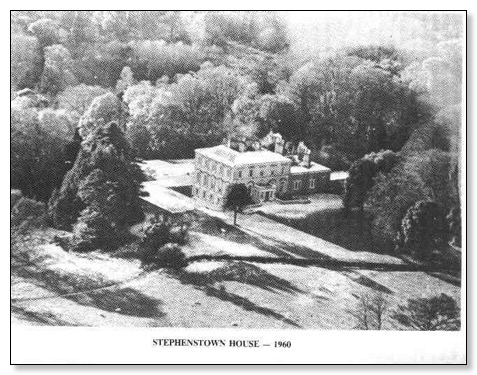
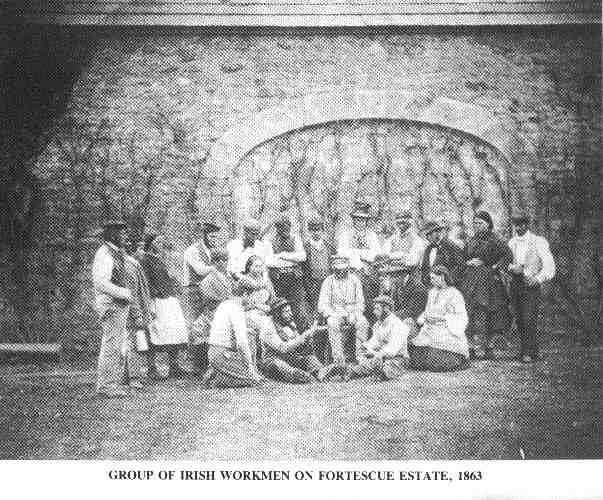
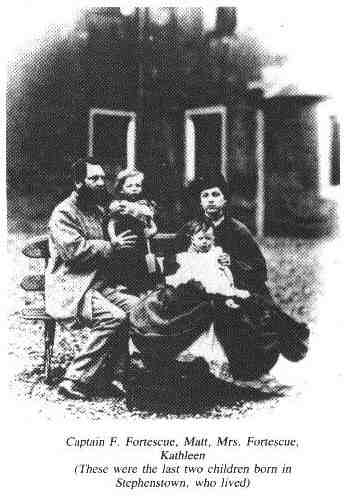

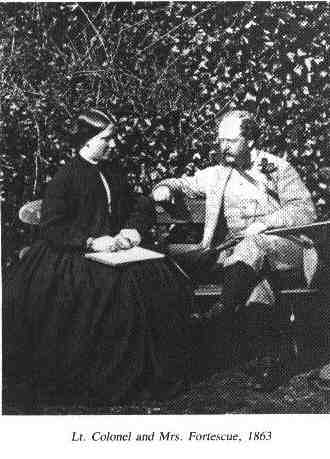
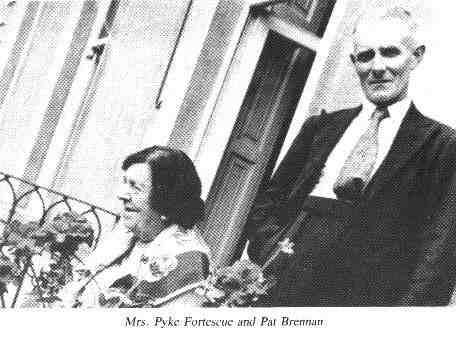
![]()
History of Stephenstown Pond
In 1817, William Galt was contracted to build two ponds according to the specification of Mr. McHugh, the head gardener and to the satisfaction of Matthew Fortescue, the landowner of Stephenstown Estate. The water was needed for the new gardens, which had just been constructed, and to drive the grinding mills in the farmyard. William Galt who was married to Agnes Burns, the sister of the famous Scottish poet Robert Burns lived in the house north of the pond which was built for him while the work was in progress. When the ponds were completed, he was retained as confidential manager to Mr. Fortescue. Galt adorned the whole site with a bewildering array of trees and shrubs because those years were part of the golden age of tree planting in Ireland. He stocked this pond with a variety of coarse fish and even today there is good fishing available there. The great diversity of plant life has remained here ever since. There is a number of other tourist attractions in the area. In the immediate area there is the "Cloch on Fearmore", "Loch an Tarbh", the site of St. Oliver Plunkett's churches and the campsite of King James' army.
